Abstract
A wide variety of metabolic inhibitors tested in vitro for trypanocidal activity on normal and drug-resistant strains of Trypanosoma rhodesiense showed no relation between acquired drug resistance and changes in specific enzymatic function. Oxidation-reduction potential is an important factor in trypanocidal action but is not obviously related to the development of resistance. The dependence on pH of the trypanocidal action of ionizing drugs against both normal and resistant trypanosomes supports the postulate that the development of resistance involves physical changes in cell structures associated with the uptake of drug.
Full text
PDF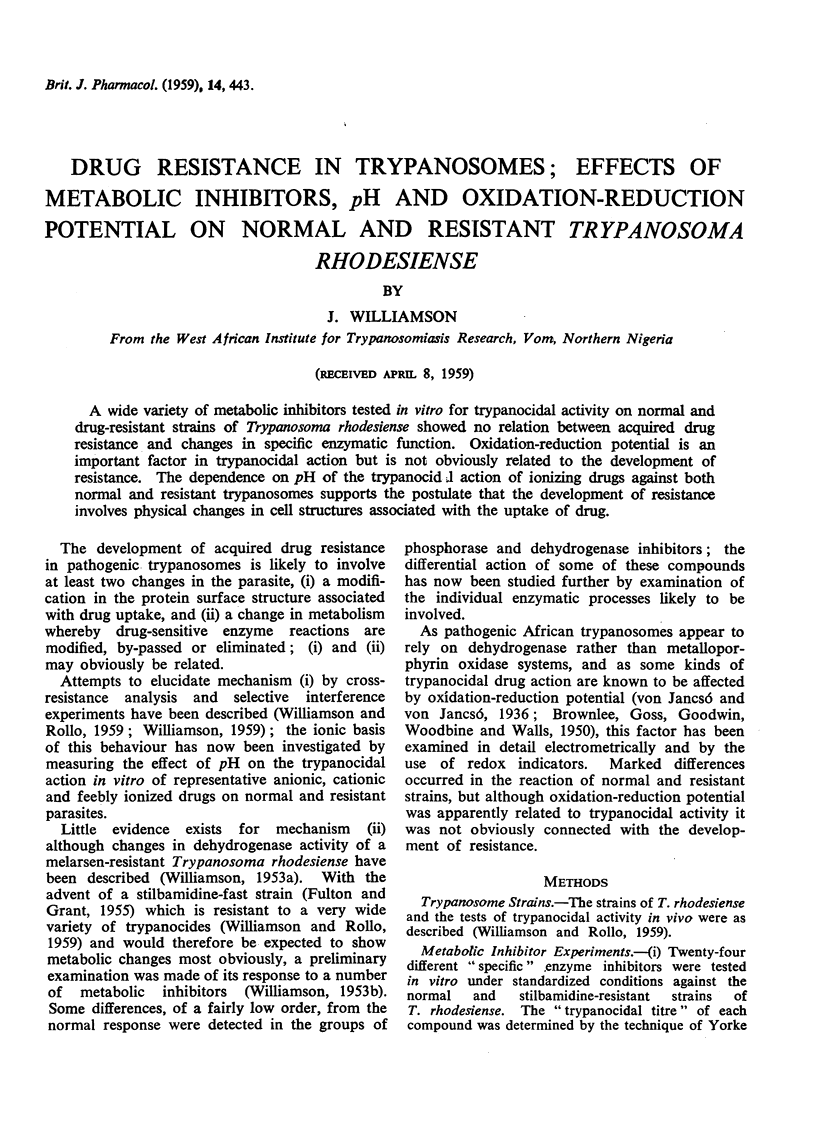
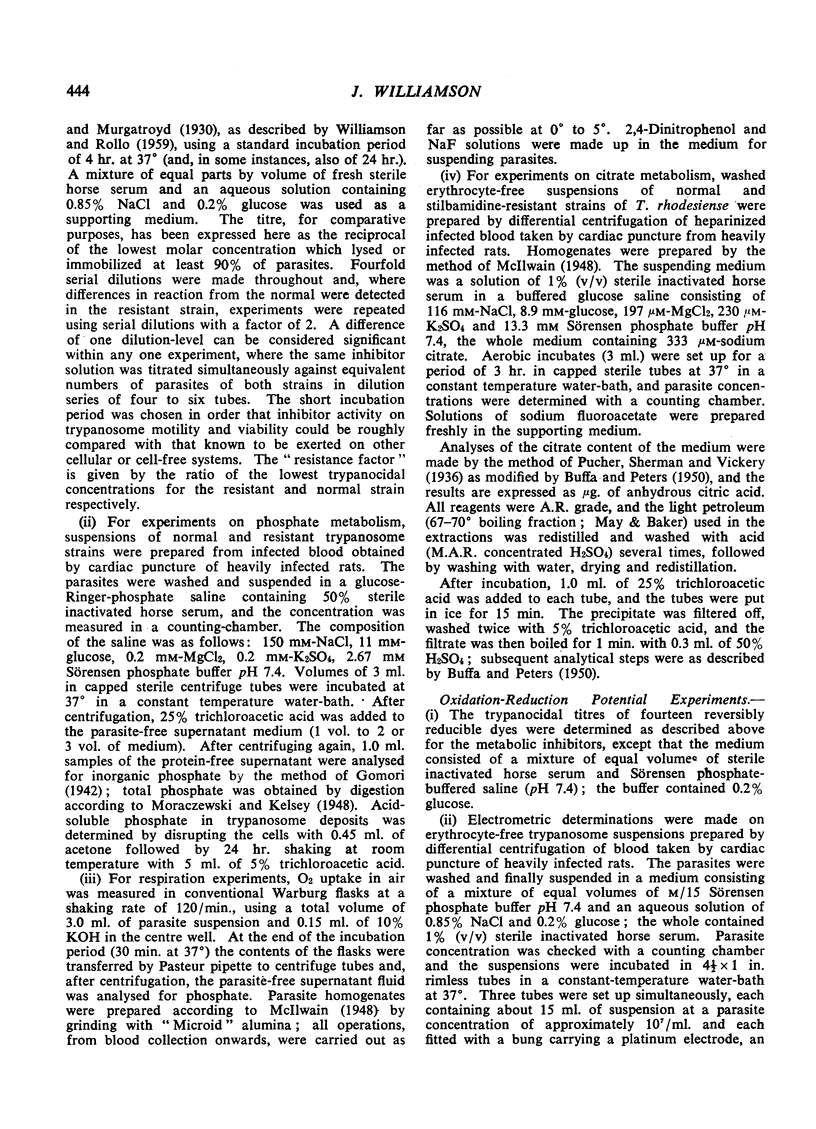
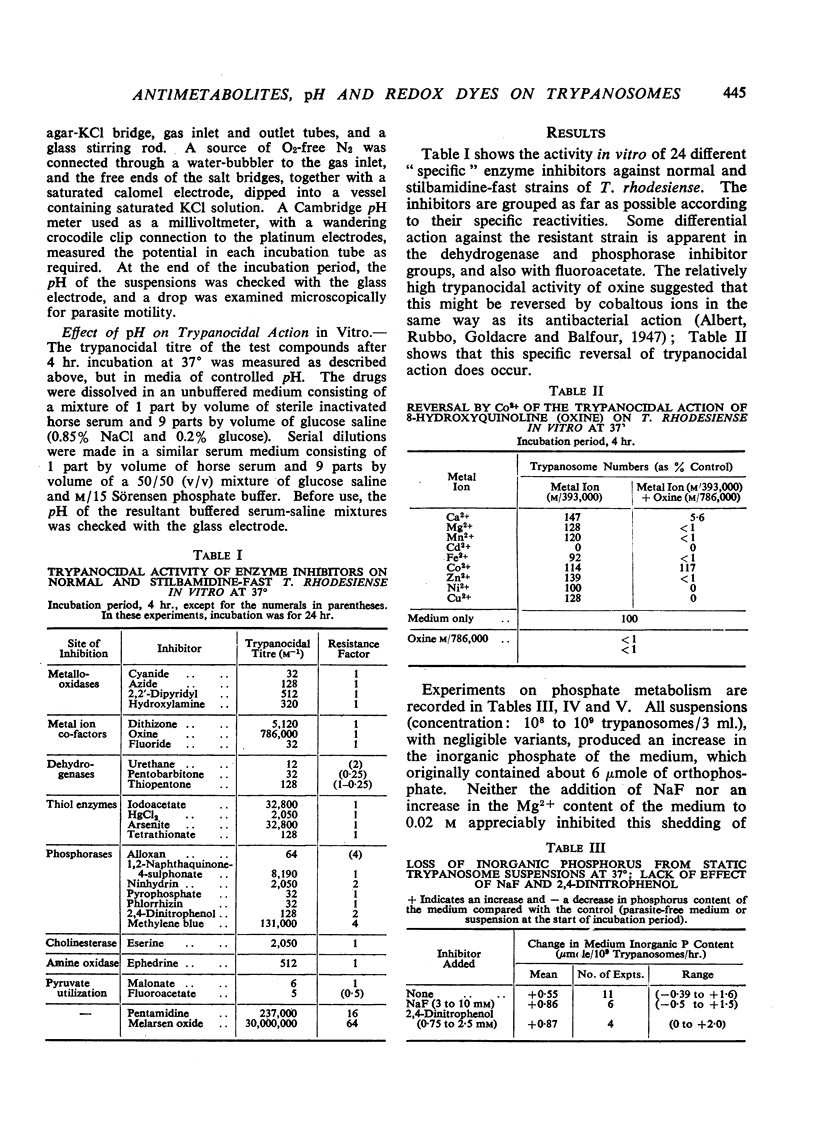
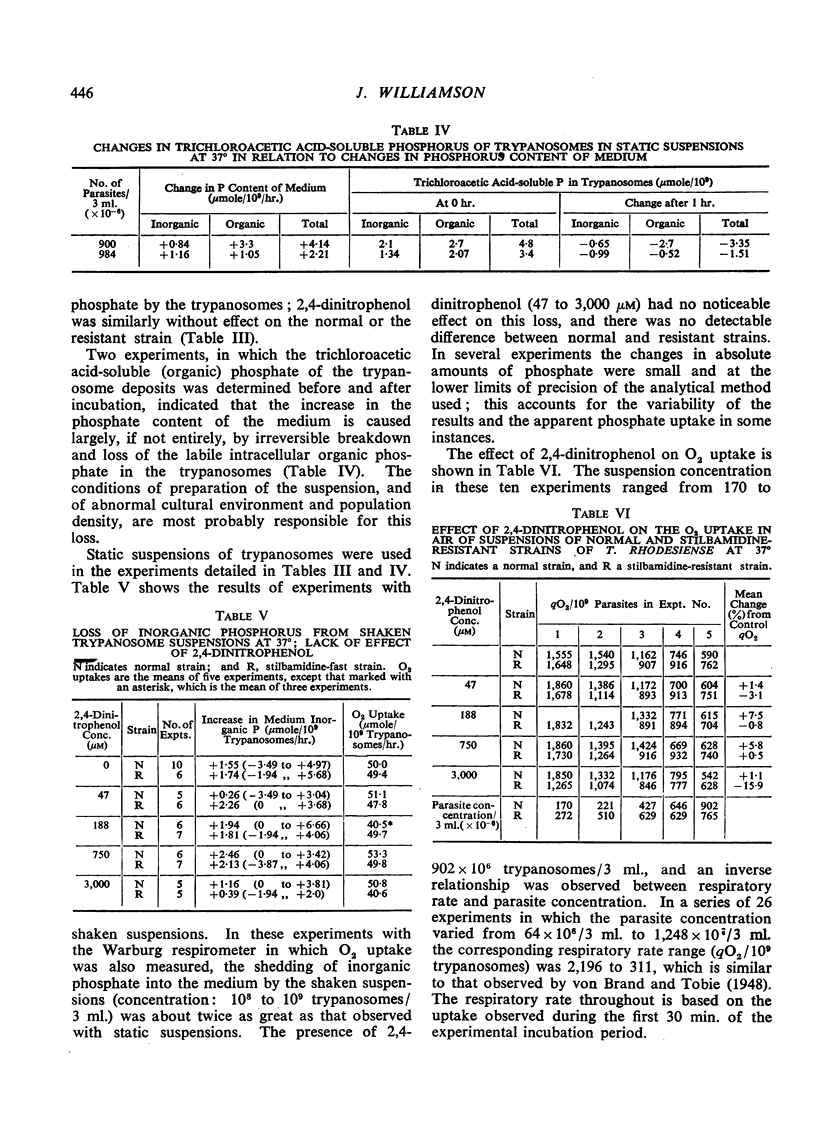
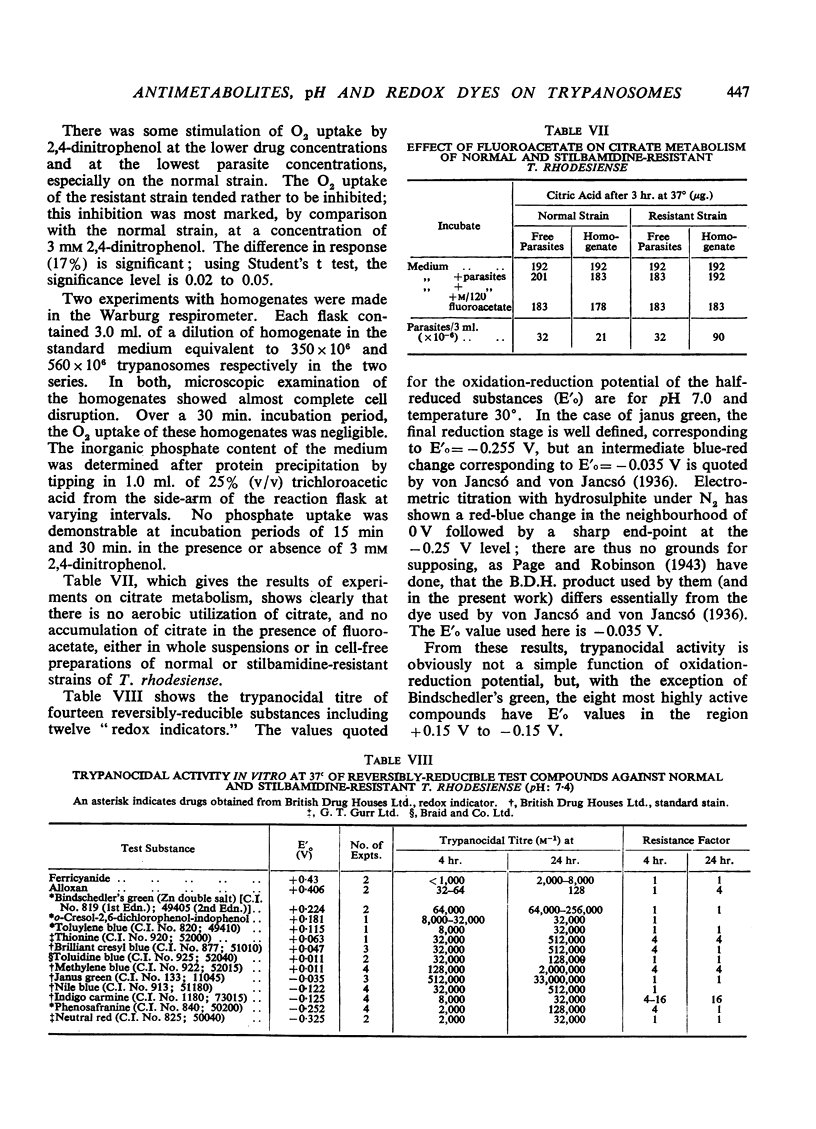
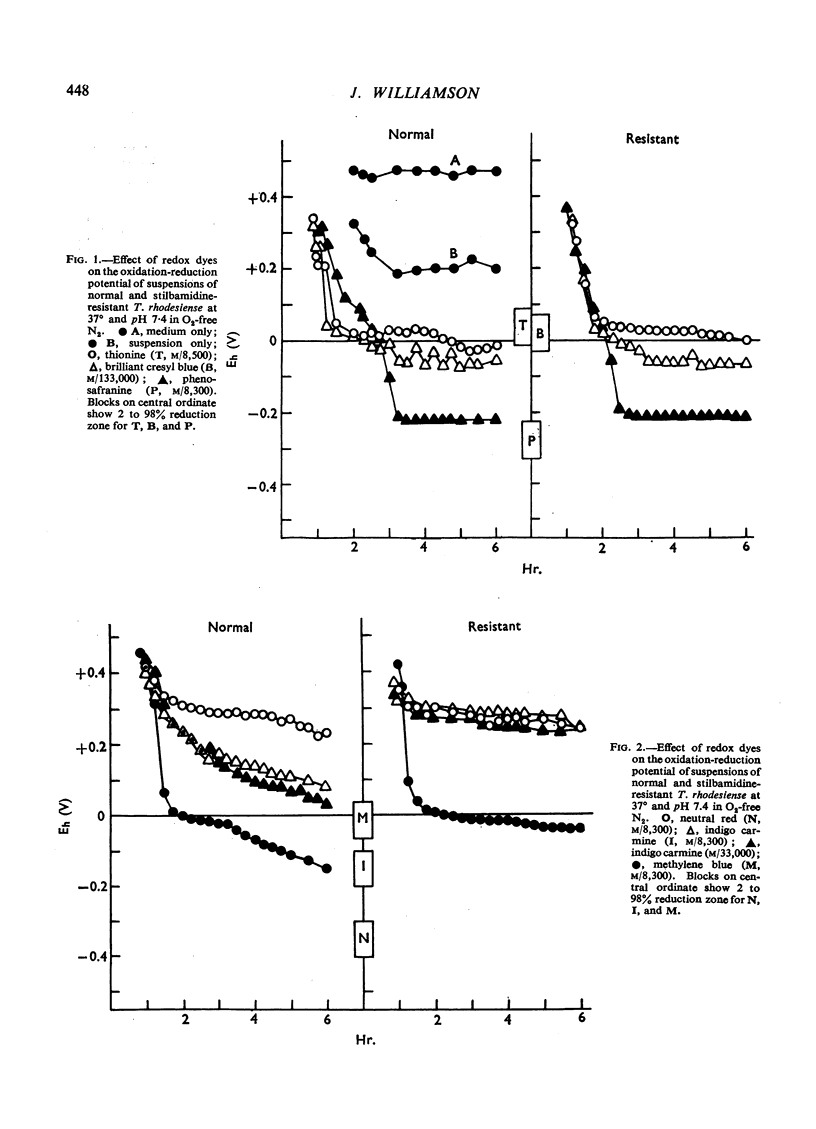
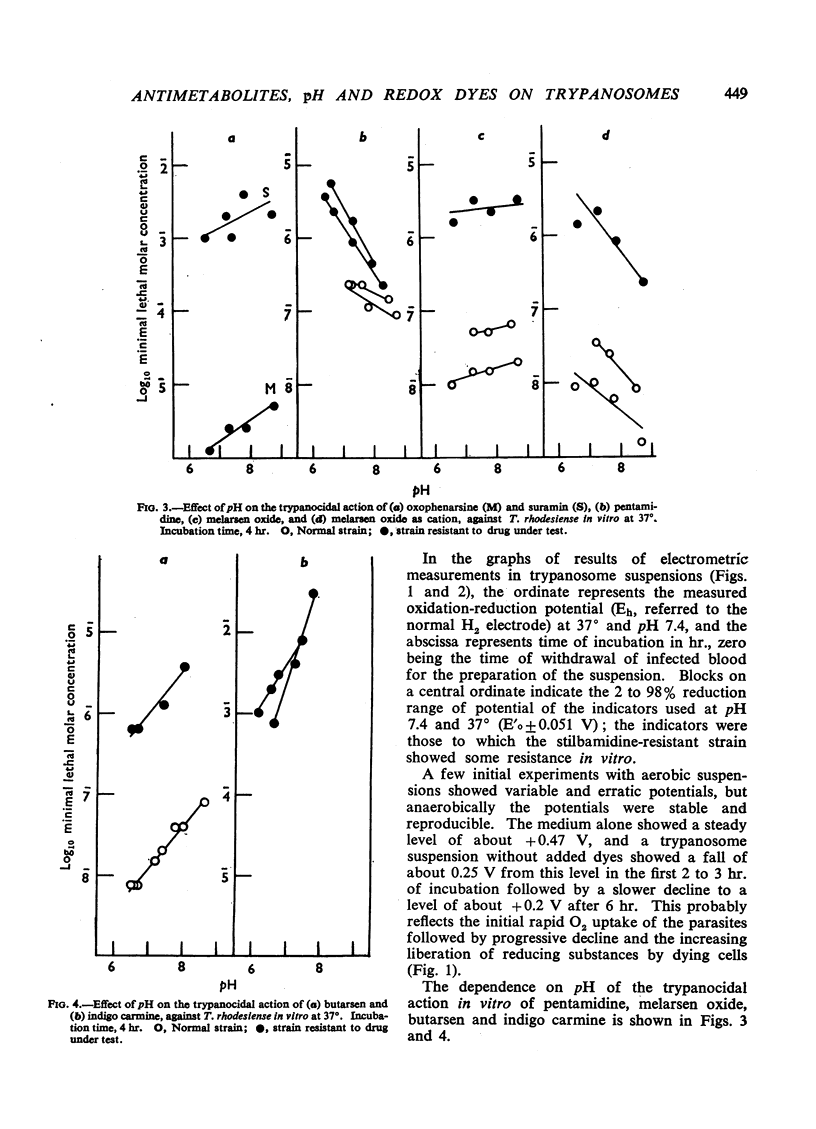
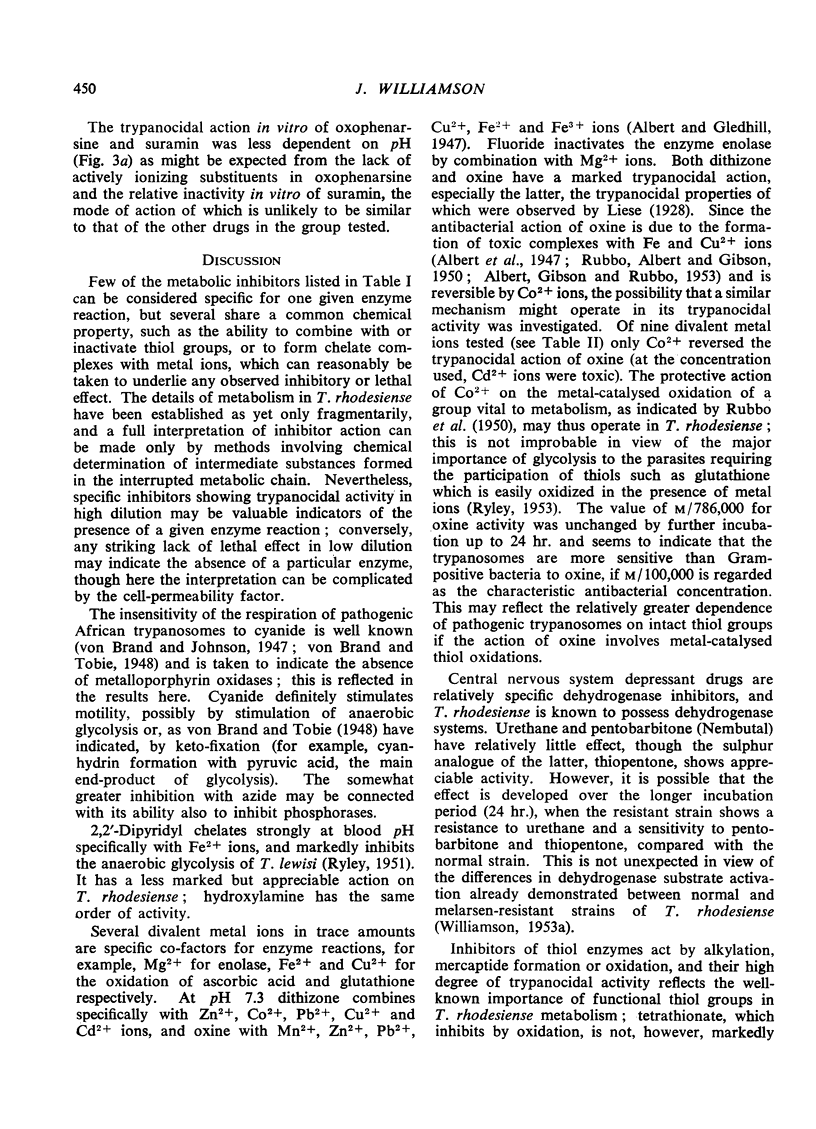
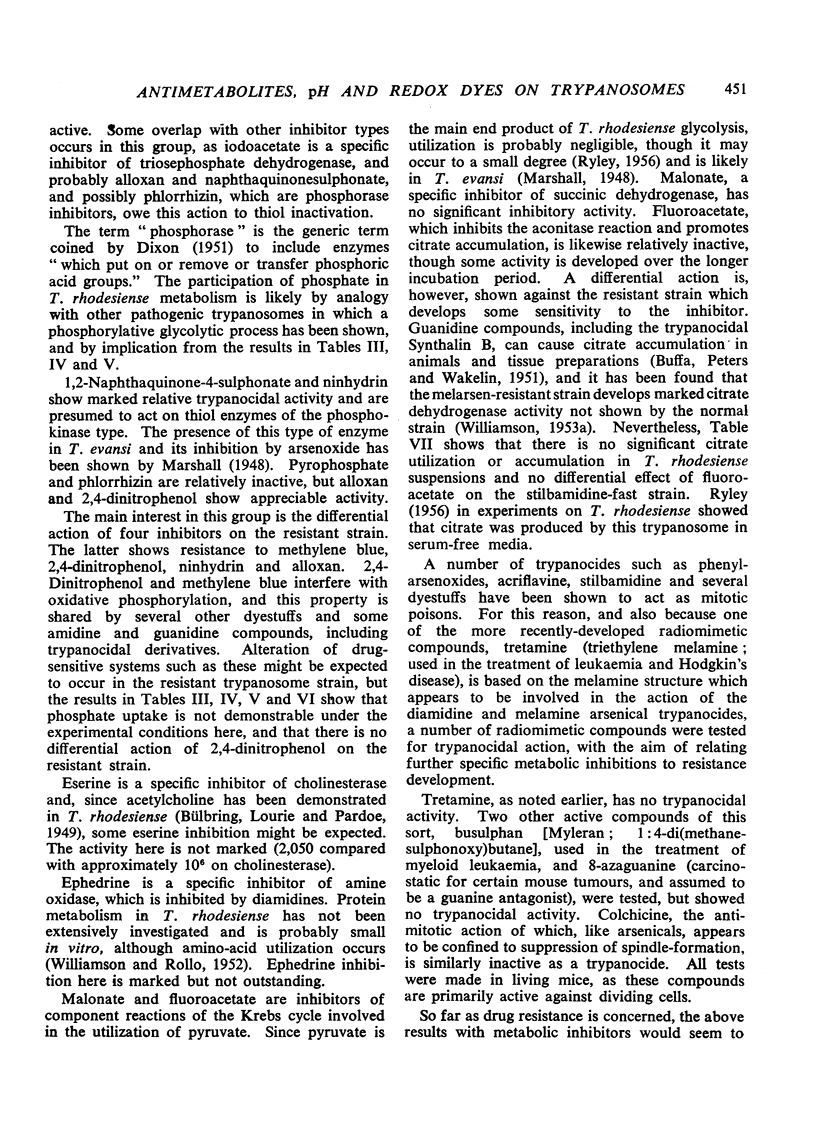

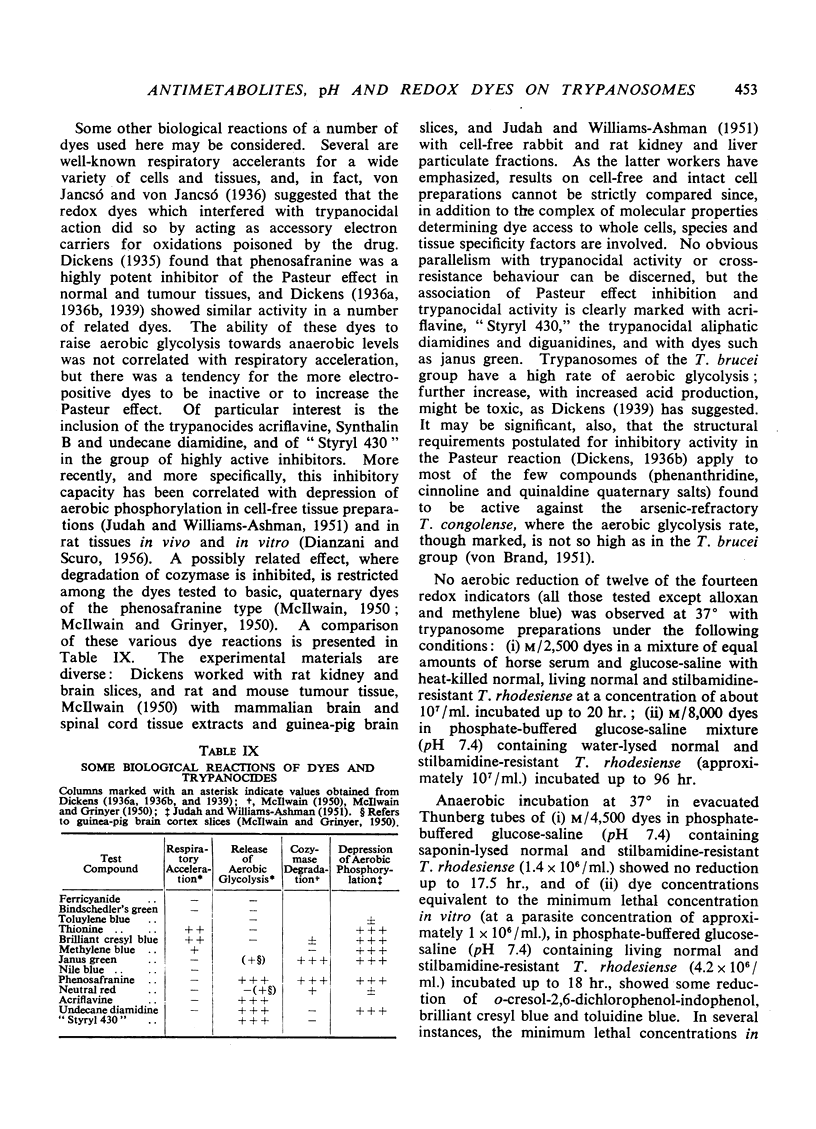
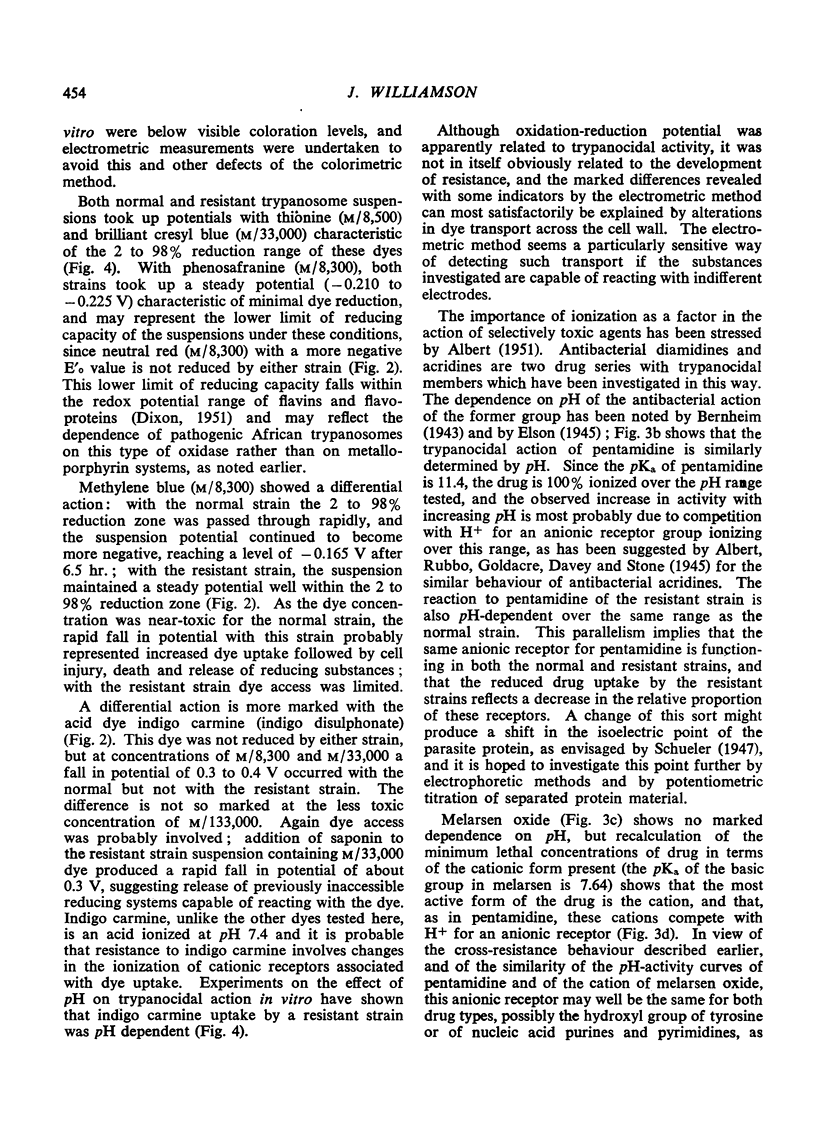
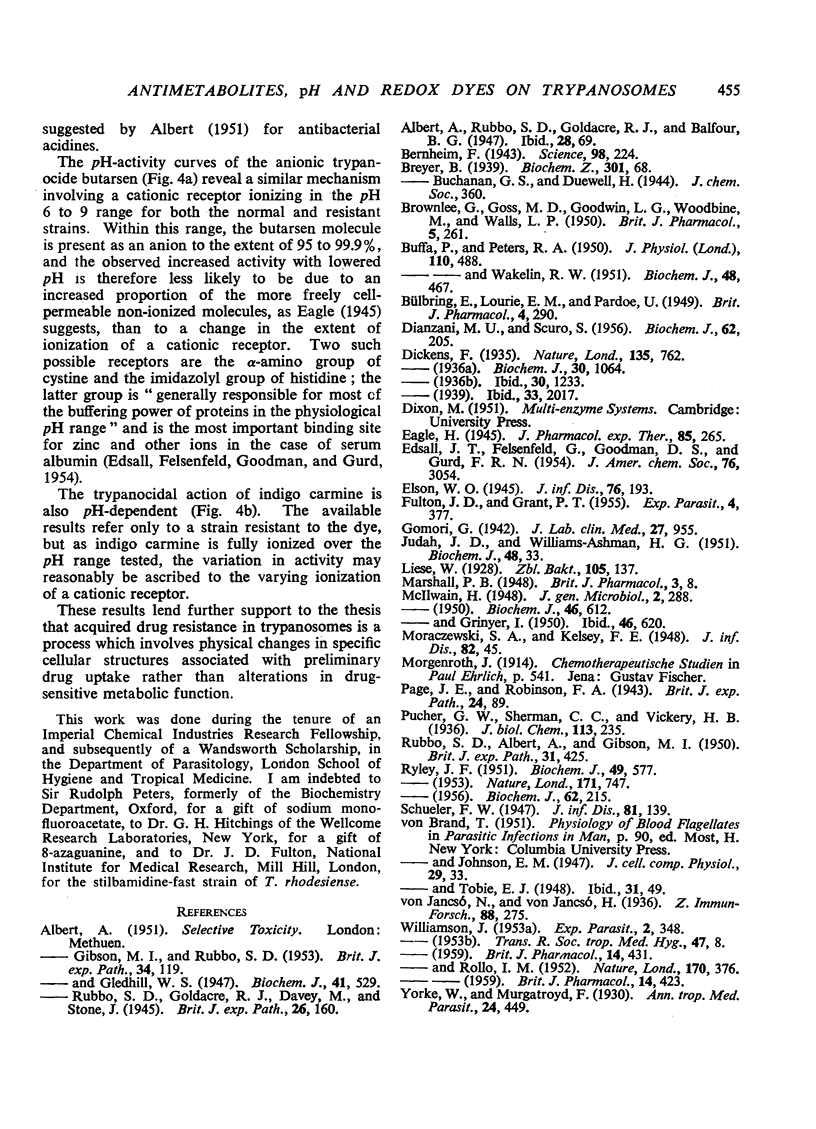
Selected References
These references are in PubMed. This may not be the complete list of references from this article.
- ALBERT A., GIBSON M. I., RUBBO S. D. The influence of chemical constitution on antibacterial activity. VI. The bactericidal action of 8-hydroxyquinoline (oxine). Br J Exp Pathol. 1953 Apr;34(2):119–130. [PMC free article] [PubMed] [Google Scholar]
- Albert A., Gledhill W. S. The choice of a chelating agent for inactivating trace metals: I. A survey of commercially available chelating agents. Biochem J. 1947;41(4):529–533. [PMC free article] [PubMed] [Google Scholar]
- BROWNLEE G., GOSS M. D., GOODWIN L. G., WOODBINE M., WALLS L. P. The chemotherapeutic action of phenanthridine compounds. I. Trypanosoma congolense and Trypanosoma rhodesiense. Br J Pharmacol Chemother. 1950 Jun;5(2):261–276. doi: 10.1111/j.1476-5381.1950.tb01012.x. [DOI] [PMC free article] [PubMed] [Google Scholar]
- BUFFA P., PETERS R. A. The in vivo formation of citrate induced by fluoroacetate and its significance. J Physiol. 1949 Dec;110(3-4):488–500. doi: 10.1113/jphysiol.1949.sp004456. [DOI] [PMC free article] [PubMed] [Google Scholar]
- DIANZANI M. U., SCURO S. The effects of some inhibitors of oxidative phosphorylation on the morphology and enzymic activities of mitochondria. Biochem J. 1956 Feb;62(2):205–215. doi: 10.1042/bj0620205. [DOI] [PMC free article] [PubMed] [Google Scholar]
- FULTON J. D., GRANT P. T. The preparation of a strain of Trypanosoma rhodesiense resistant to stilbamidine and some observations on its nature. Exp Parasitol. 1955 Jul;4(4):377–386. doi: 10.1016/0014-4894(55)90014-x. [DOI] [PubMed] [Google Scholar]
- JUDAH J. D., WILLIAMS-ASHMAN H. G. The inhibition of oxidative phosphorylation. Biochem J. 1951 Jan;48(1):33–42. doi: 10.1042/bj0480033. [DOI] [PMC free article] [PubMed] [Google Scholar]
- McILWAIN H., GRINYER I. Concentration or exclusion of some heterocyclic compounds by brain cortex, in relation to their effects on carbohydrate metabolism. Biochem J. 1950 May;46(5):620–628. doi: 10.1042/bj0460620. [DOI] [PMC free article] [PubMed] [Google Scholar]
- RUBBO S. D., ALBERT A., GIBSON M. I. The influence of chemical constitution on antibacterial activity. V. The antibacterial action of 8-hydroxyquinoline (oxine). Br J Exp Pathol. 1950 Jun;31(3):425–441. [PMC free article] [PubMed] [Google Scholar]
- RYLEY J. F. Studies on the metabolism of the protozoa. I. Metabolism of the parasitic flagellate, Trypanosoma lewisi. Biochem J. 1951 Oct;49(5):577–585. doi: 10.1042/bj0490577. [DOI] [PMC free article] [PubMed] [Google Scholar]
- WILLIAMSON J. Observations on the dehydrogenase activity of normal and drug-resistant strains of Trypanosoma rhodesiense. Exp Parasitol. 1953 Oct;2(4):348–357. doi: 10.1016/0014-4894(53)90020-4. [DOI] [PubMed] [Google Scholar]
- WILLIAMSON J., ROLLO I. M. Stimulating effect of amino-acids on the survival at 37 degrees C. of Trypanosoma rhodesiense in a serum-free synthetic medium. Nature. 1952 Aug 30;170(4322):376–377. doi: 10.1038/170376a0. [DOI] [PubMed] [Google Scholar]


